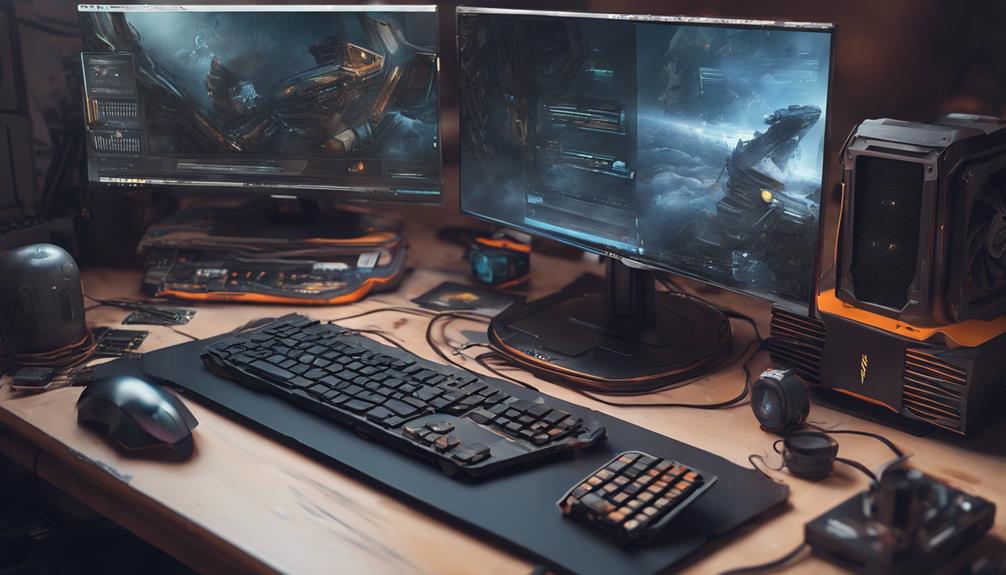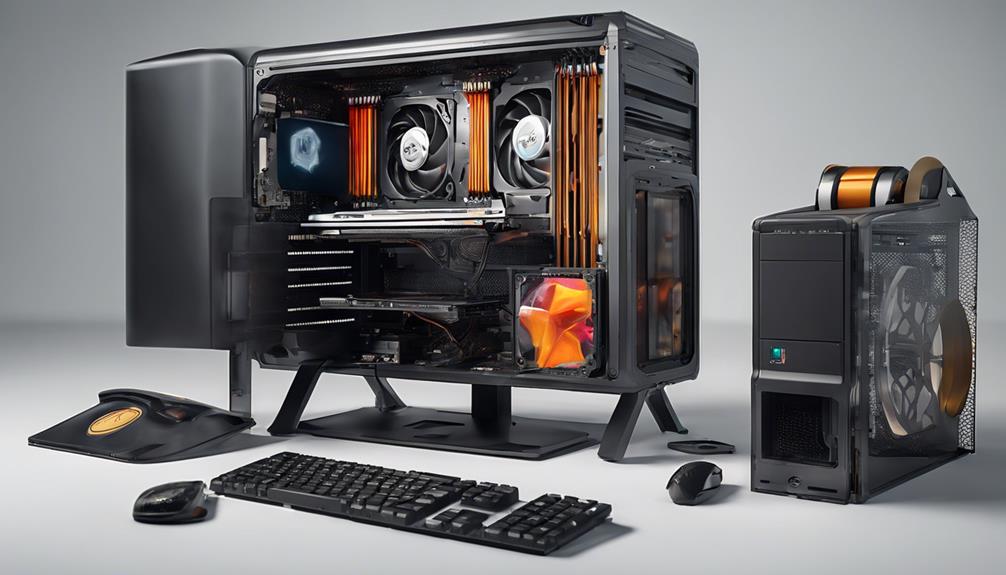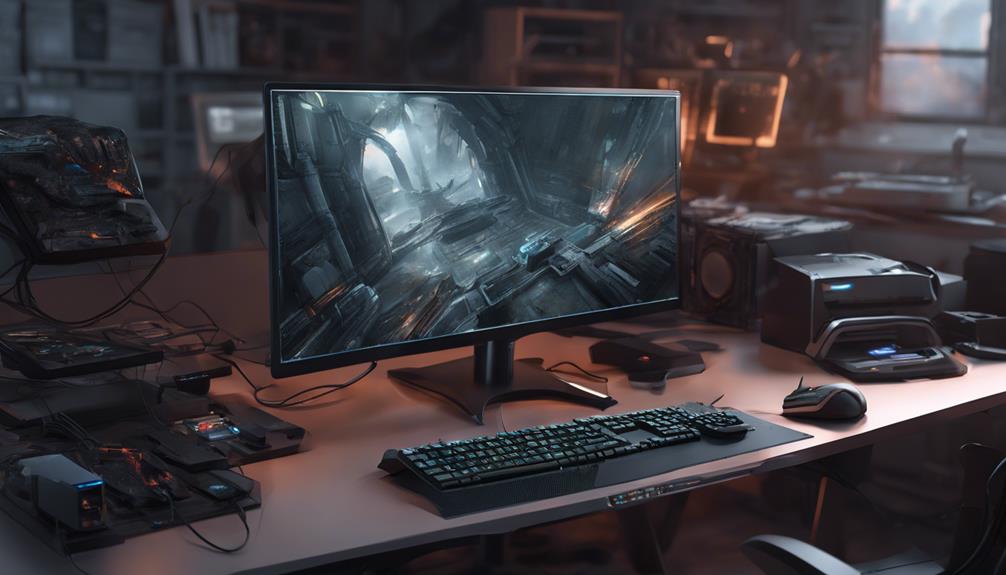When it comes to exploring the world of 3D printing, the foundation of your computer setup is vital. But what truly defines the ideal computer for this intricate craft? Beginning with the basics and gradually delving into the more sophisticated specifications, the path to finding the perfect match for your 3D printing endeavors is a journey worth undertaking. By unraveling the layers of computer requirements tailored to the art of 3D printing, you might discover the key to accessing a world of precision and efficiency in your projects.
Minimum Computer Specifications for 3D Printing

When stepping into the world of 3D printing, your primary consideration should be ensuring your computer meets the minimum specifications to handle basic slicing and printing tasks effectively. A computer with a 4-core i5 processor, 8GB of RAM, and a 512GB hard drive is suitable for these initial steps.
While a dedicated graphics card isn't necessary for 3D printing, it can slightly improve processing times for larger files. Keep in mind that a budget GPU like the NVIDIA 1650ti is adequate for most printing needs.
Additionally, having essential software such as slicing programs for converting 3D files to G-Code is vital.
With these basics covered, you'll be prepared to explore the exciting world of 3D printing.
Optimal Computer Specifications for 3D CAD Modeling
To achieve peak performance in 3D CAD modeling, prioritize a computer with a 6-core i7 processor, 16GB of RAM, and a NVIDIA 1650ti graphics card.
Here are some key considerations for ideal computer specifications in 3D CAD modeling:
- Fast Processing: A 6-core i7 processor guarantees swift calculations and handling of complex designs.
- Sufficient Memory: With 16GB of RAM, you can smoothly run multiple CAD software and handle large project files.
- Graphics Performance: The NVIDIA 1650ti graphics card boosts rendering speeds and supports detailed visualizations.
- Storage Capacity: A spacious hard drive, ideally 1TB, accommodates extensive design files and software installations.
Importance of Graphics Cards in 3D Printing

Graphics cards play an important role in enhancing the performance of 3D printing tasks, especially when dealing with high-resolution and intricate designs. While not essential for basic printing, a graphics card can greatly improve processing times for large files and is essential for achieving detailed objects.
Opting for a budget GPU like the NVIDIA 1650ti is generally adequate for most 3D printing needs. However, if you plan on rendering complex designs, more advanced and expensive cards may be necessary. Investing in a good graphics card guarantees smoother and more efficient printing processes, particularly when working on projects that demand precise details and intricate structures.
Essential Software for 3D Printing
Using slicer software is essential for converting 3D files to G-Code in preparation for 3D printing.
- Modeling software like Fusion 360 or SolidWorks for custom designs
- Mesh repair tools like Meshmixer for fixing files
- Printer management tools for remote control of printers
Additional software for modeling, mesh repair, and printer management complements the slicing process, allowing for a seamless 3D printing workflow.
Recommendations for Computer Upgrades

If your current computer struggles with handling complex 3D modeling tasks, considering upgrades that align with recommended specifications can enhance your efficiency and productivity. To help you make informed decisions, here is a comparison table showcasing the key differences between a system suitable for 3D printing and one ideal for 3D CAD modeling:
| Specification | 3D Printing | 3D CAD Modeling |
|---|---|---|
| Processor | 4 cores i5 | 6 cores i7 |
| RAM | 8GB | 16GB |
| Graphics Card | Not necessary | NVIDIA 1650ti |
| Hard Drive | 512GB | 1TB |
Frequently Asked Questions
Can 3D Printers Operate Without a Connected Computer?
Yes, 3D printers can operate without a connected computer. They can function independently using SD cards. Just load your design onto the card, insert it into the printer, and start printing hassle-free.
Is the Choice of Operating System Crucial for 3D Printing?
For 3D printing, the choice of operating system isn't essential. Any modern OS works fine. Focus on hardware specs like CPU, RAM, and storage. Graphics card, while not necessary, can speed up processing for intricate designs.
Are Laptops Suitable for Handling 3D Printing Tasks?
Laptops are suitable for handling 3D printing tasks. Budget models under $500 meet requirements. Use essential slicer software like Cura or PrusaSlicer. No need to worry about the operating system. Your current setup should suffice.
Do Budget Laptops Meet the Requirements for 3D Printing?
Budget laptops meet 3D printing needs, handling tasks efficiently. Reliable for slicing and basic 3D functions, they are cost-effective. Graphics card not crucial, but enhances detailed work. Upgrade for complex designs. Your budget laptop suffices.
Is a High-End Graphics Card Necessary for 3D Printing?
High-end graphics cards are not essential for 3D printing; they slightly speed up processing for large files and are vital for intricate designs. A budget GPU like NVIDIA 1650ti is sufficient, saving costs.
Conclusion
In summary, whether you're just starting out with basic 3D printing or diving into intricate CAD modeling, having the appropriate computer setup is essential. By investing in the ideal specifications, you can guarantee faster processing, smoother workflow, and overall improved 3D printing experience.
Remember, the right computer can make all the difference in bringing your projects to life with precision and efficiency. Upgrade wisely and watch your creativity soar!